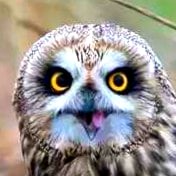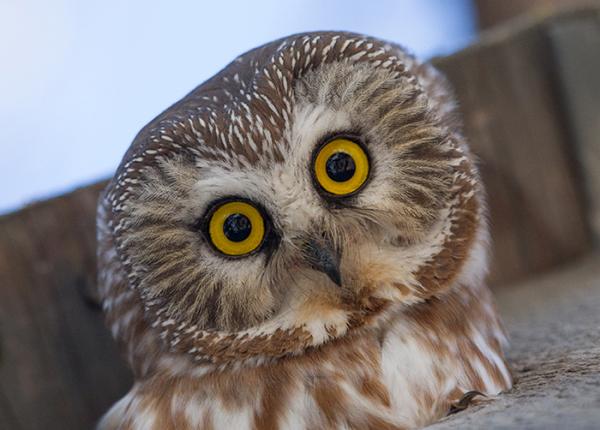From Raven Ridge Wildlife Center
A call came in very early on Sunday morning regarding a Great Horned Owl in need of help. The owl was large and capable of flight but was extremely weak. The finder, Colleen, and her son attempted to contain the owl, but it managed to evade them. Colleen was able to send photos of the owl, clearly demonstrating that it was in distress. Our rehabilitator met Colleen at the exact location of the owl. Upon arrival, they found the owl perched in a tree, appearing very weak and having difficulty staying perched. It was soaked and had trouble keeping its wings close to its body. When approached, the owl flew across a cornfield while being chased by crows. It took flight again, remaining low to the ground until, in its weakened and exhausted state, it was finally captured safely.
Our rehabilitator was horrified by the owl’s physical condition and quickly identified the cause of its illness. The Great Horned Owl was suffering from a severe case of trichomoniasis (also known as frounce in raptors and canker in pigeons and doves), a contagious disease caused by a parasite that affects the upper gastrointestinal tract. This condition leads to lesions in the affected areas, including the mouth, and as it worsens, it can hinder the bird’s ability to eat, drink, and even breathe.
Thanks to Colleen for spotting this owl and collaborating with our center to get it the necessary treatment. We hope for a full recovery, although the prognosis is cautious due to the severity of the case.
Trichomoniasis is caused by the single-celled protozoan Trichomonas gallinae, which has several strains; some lead to clinical disease while others do not. This disease is primarily associated with pigeons and doves, but raptors can also be affected. On rare occasions, waterfowl and upland game birds may be infected. Domestic turkeys, chickens, and other captive birds can also contract the disease. Importantly, this protozoan is not known to infect humans. Trichomoniasis is one of the oldest known wildlife diseases with written records dating back to the 1500s. The protozoan responsible for the disease was not isolated until 300 years later.
The first photo sent to us by the finder. This was an owl in trouble.
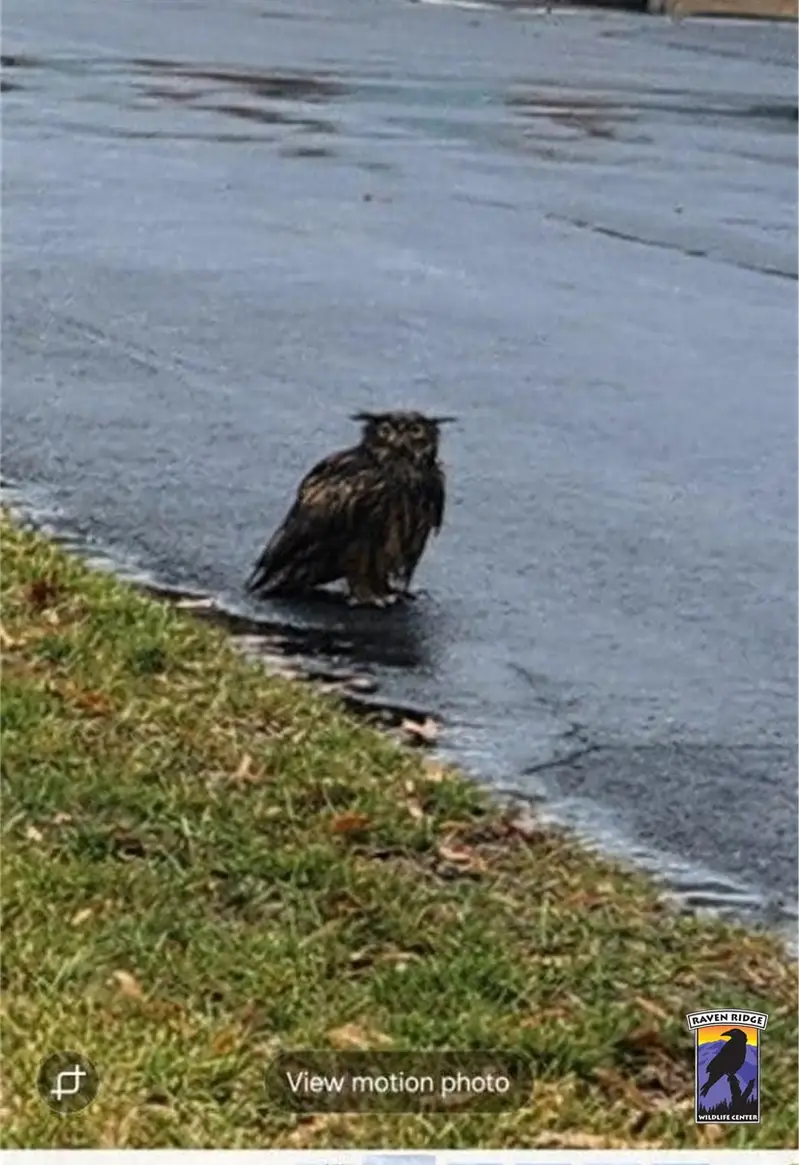
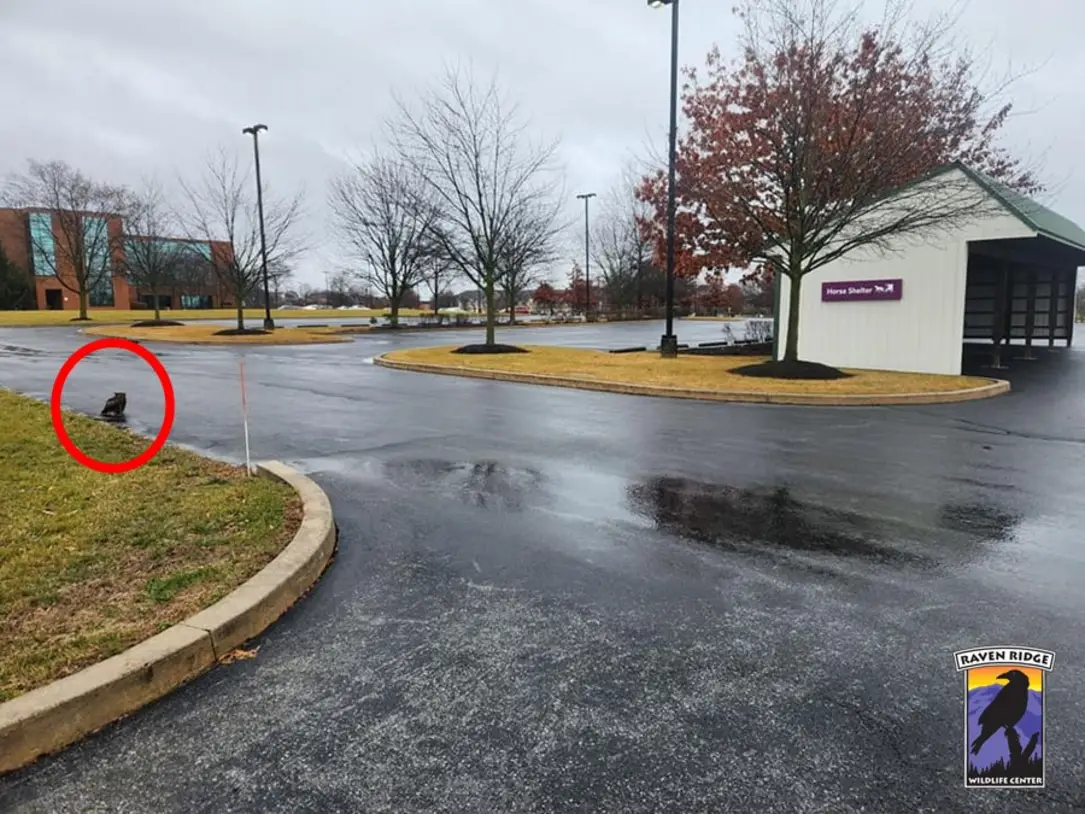
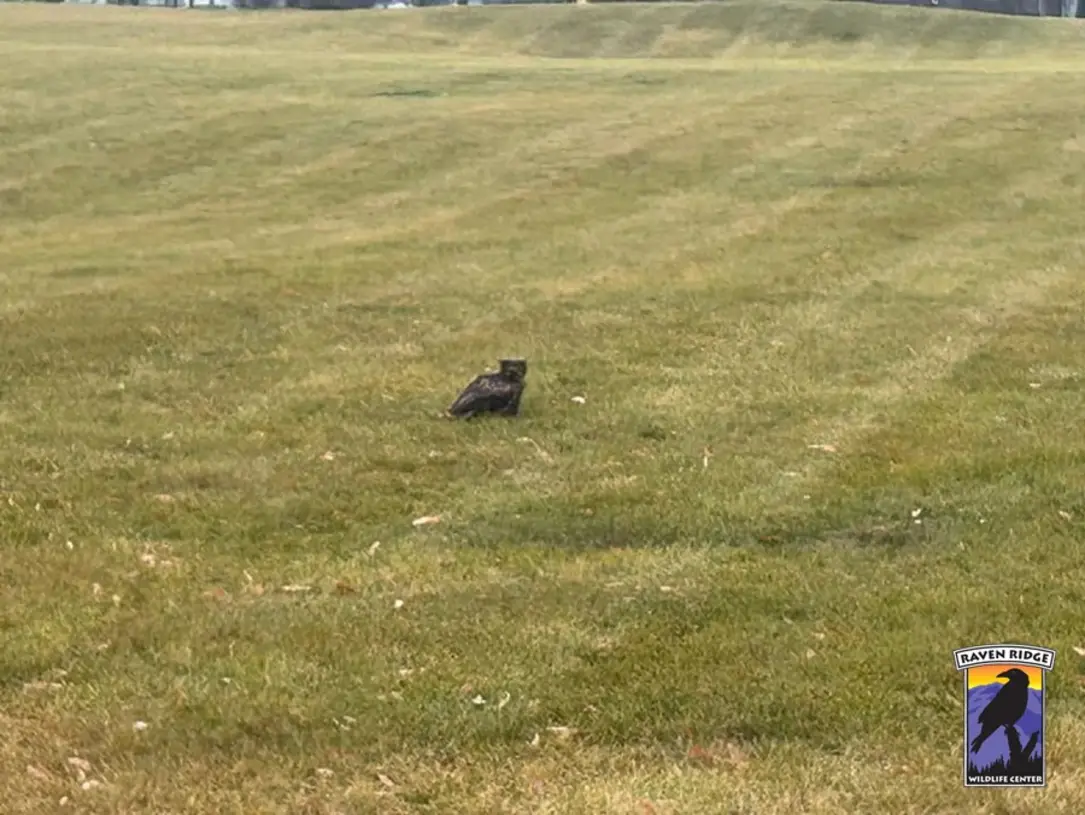
The owl was able to fly up into a tree.
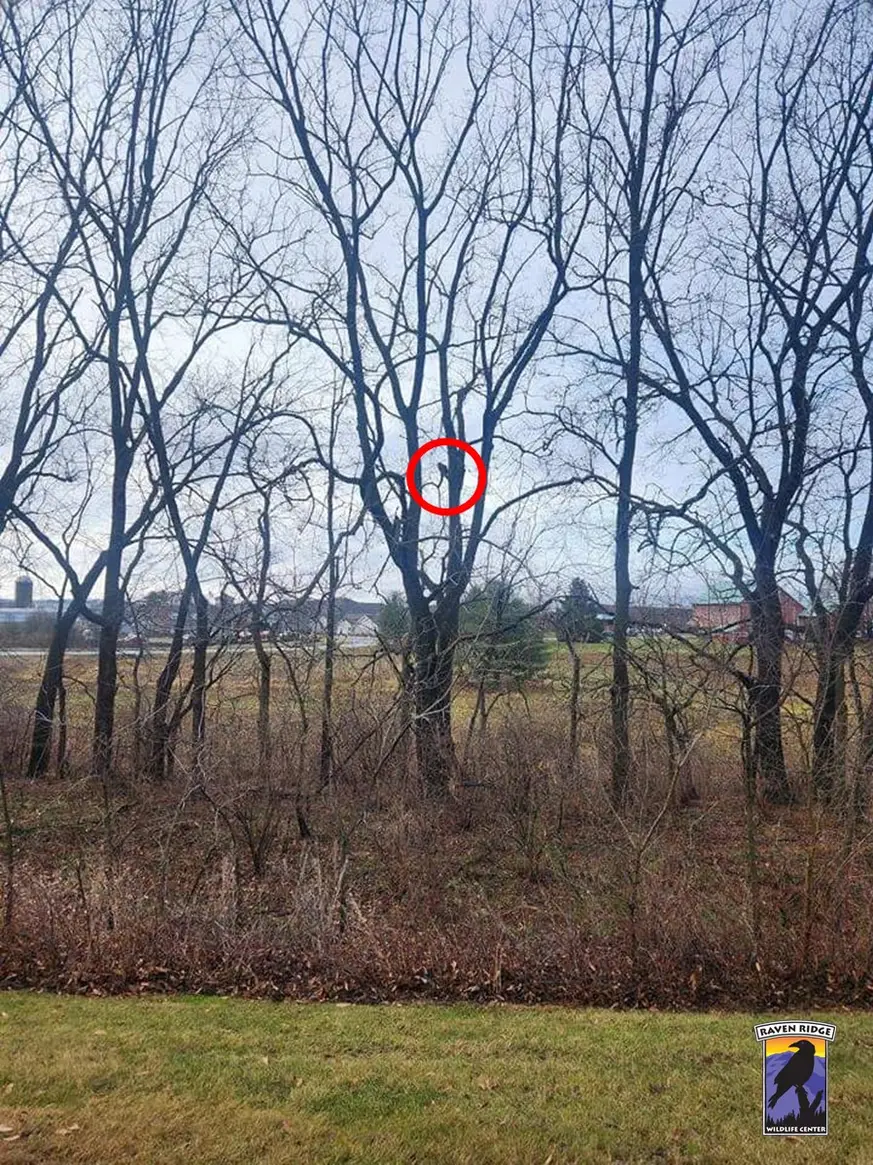
The owl flew out of the tree and across the field. Our Rehabber knew that this owl is in serious trouble and needed rescue.
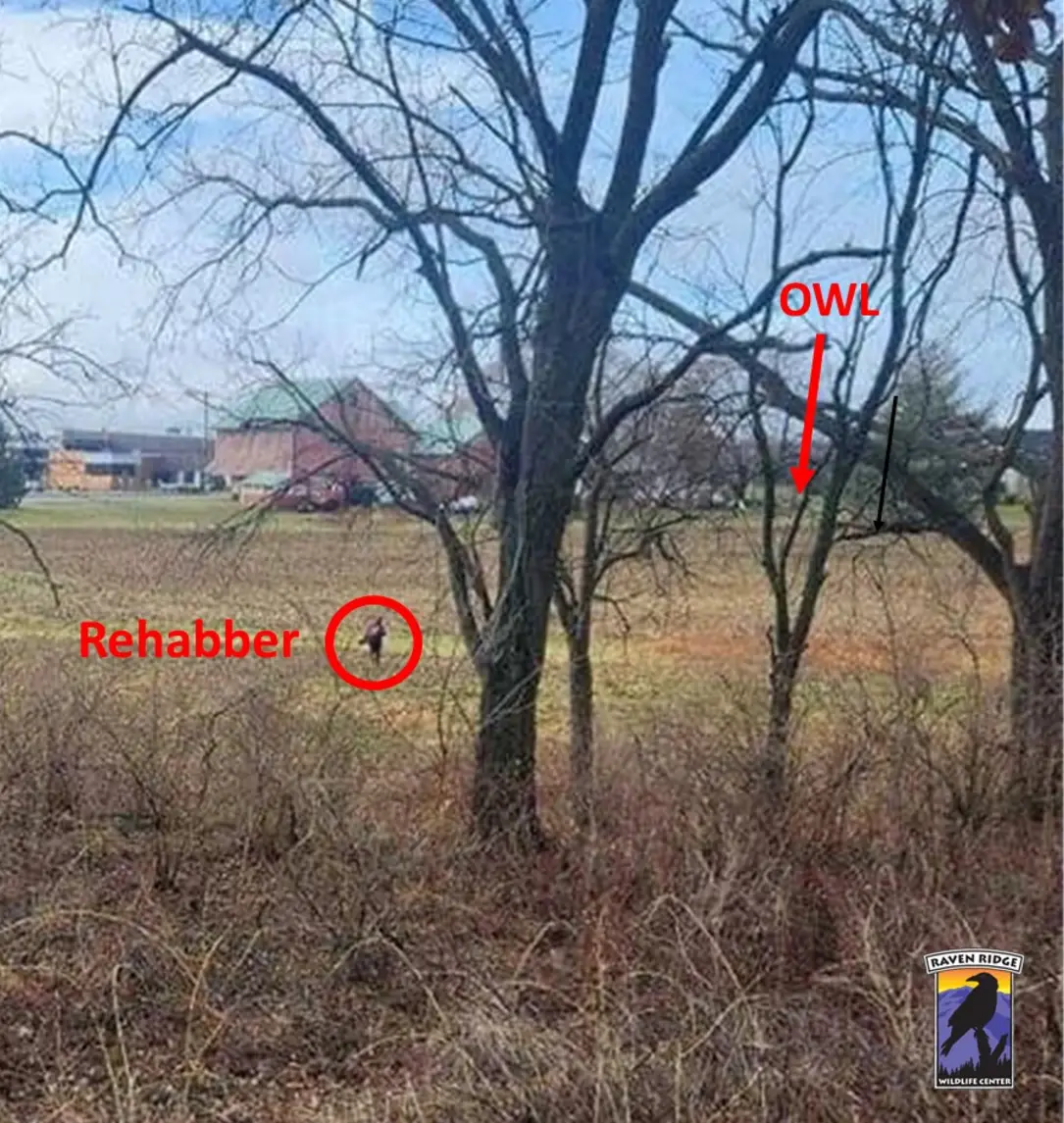
Finally able to contain the owl and head back to the center.
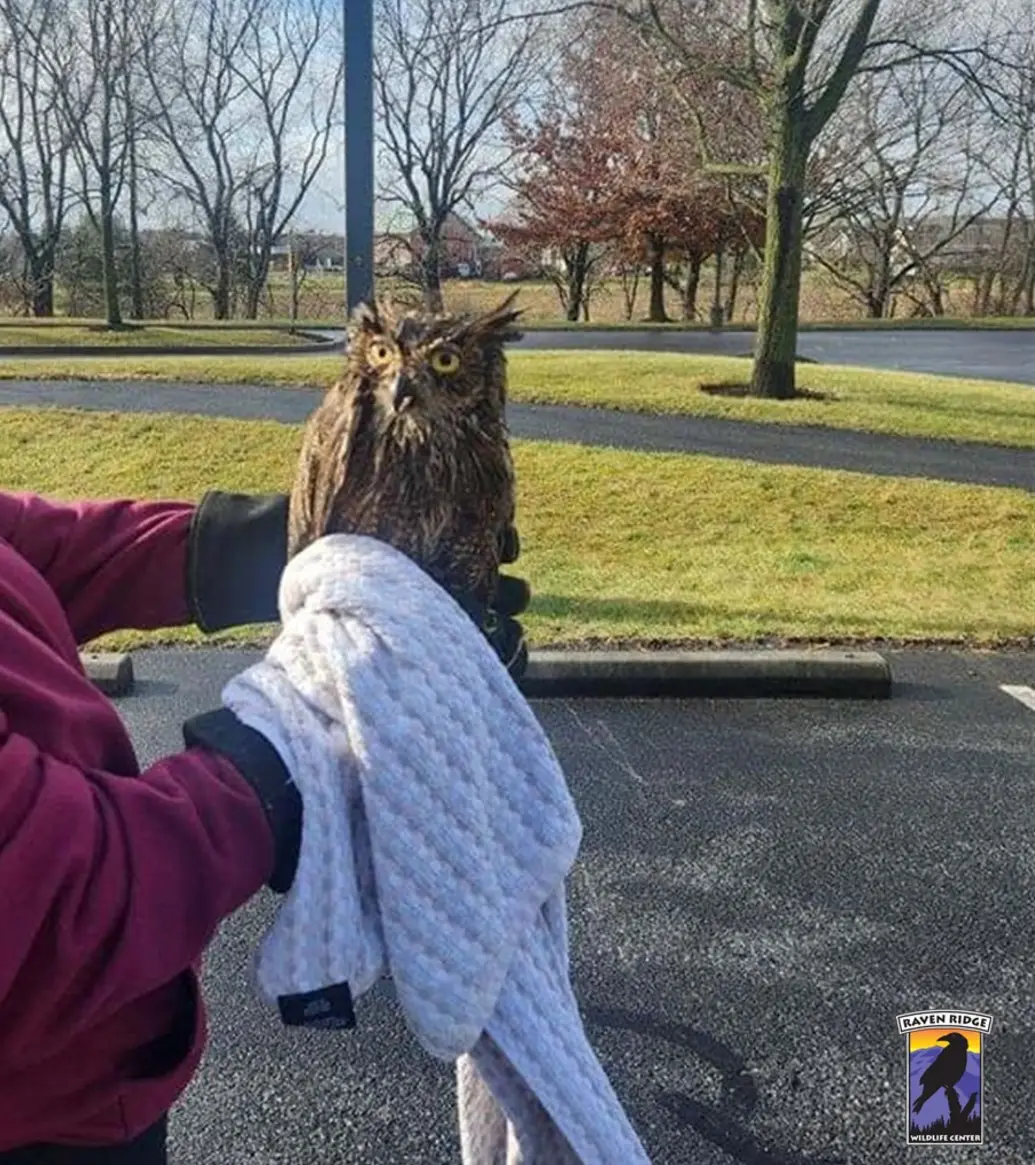
The illness photos
This is the large infected area and the owl is not able to close his mouth.
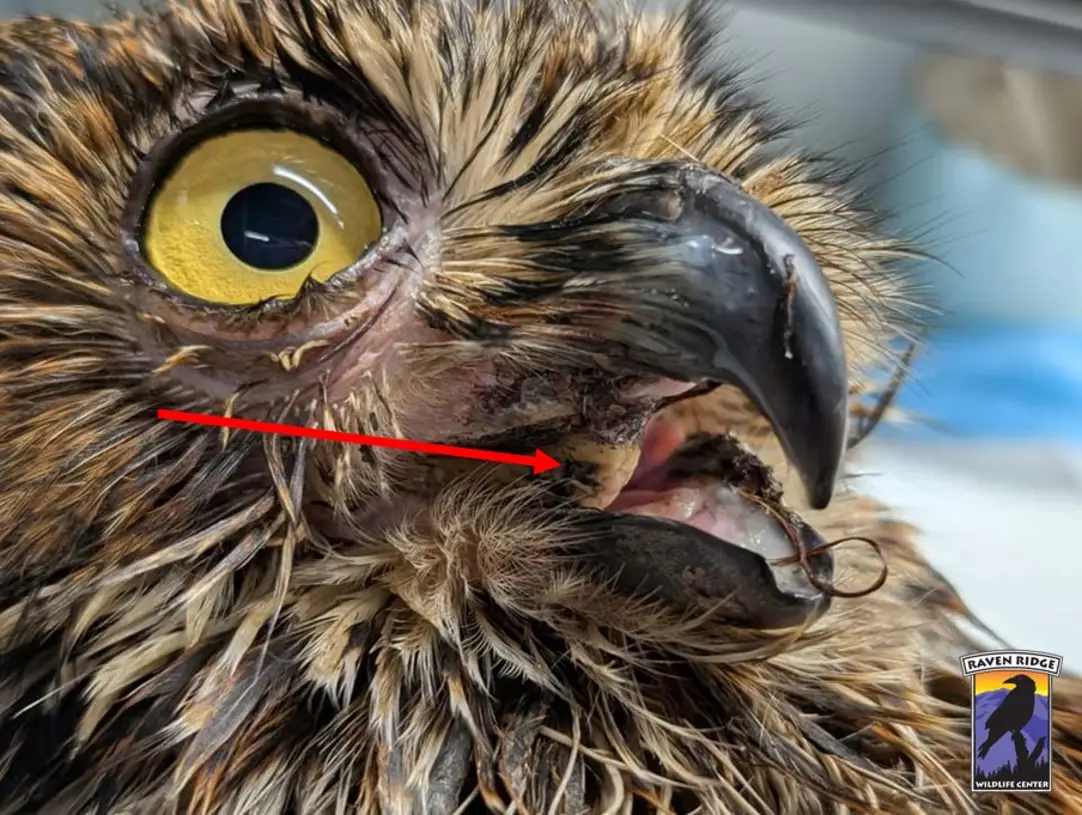
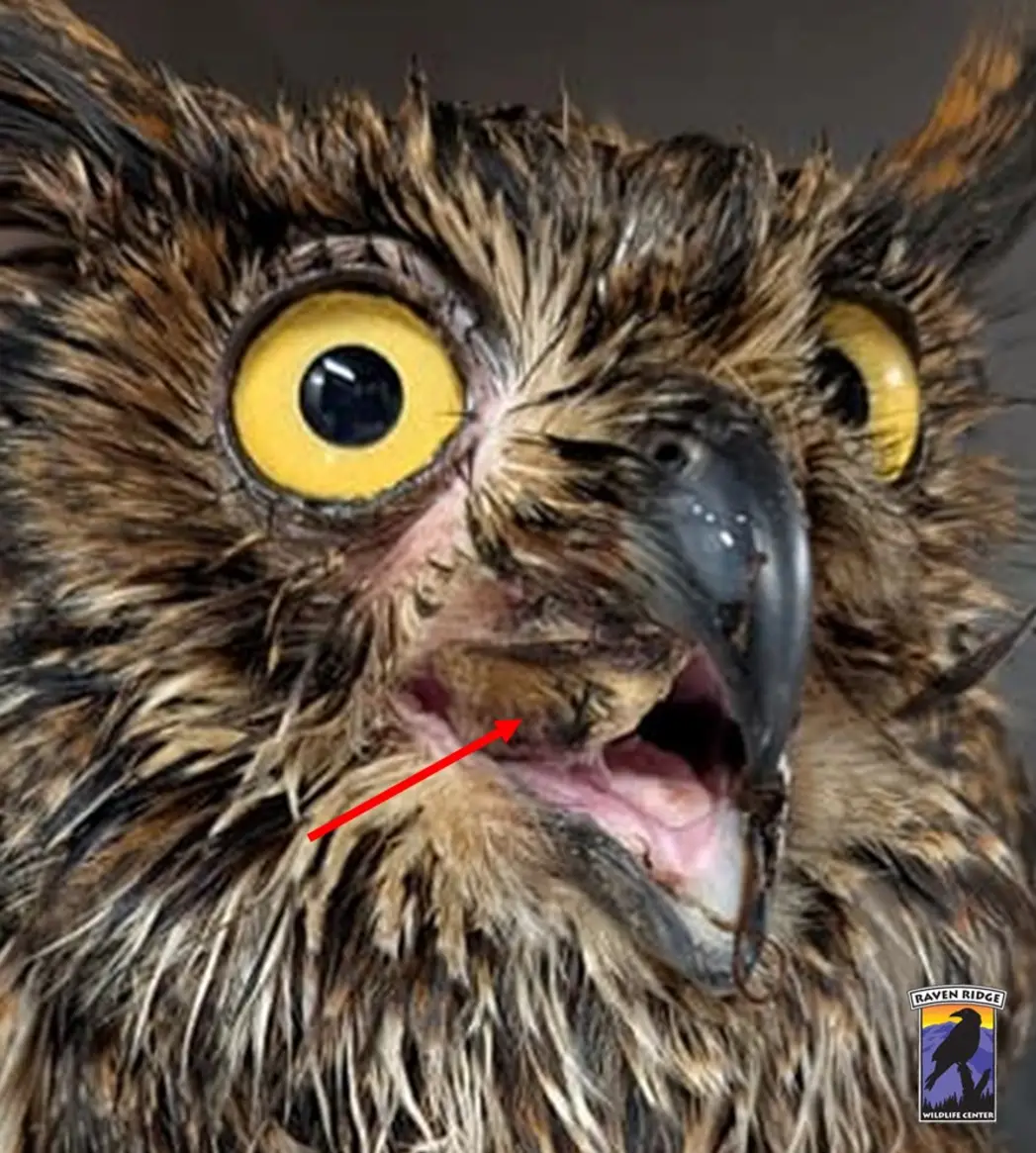
Very serious and being treated. We will not be able to tell the severity for a few days. We are guarded and hope the owl will pull though this.
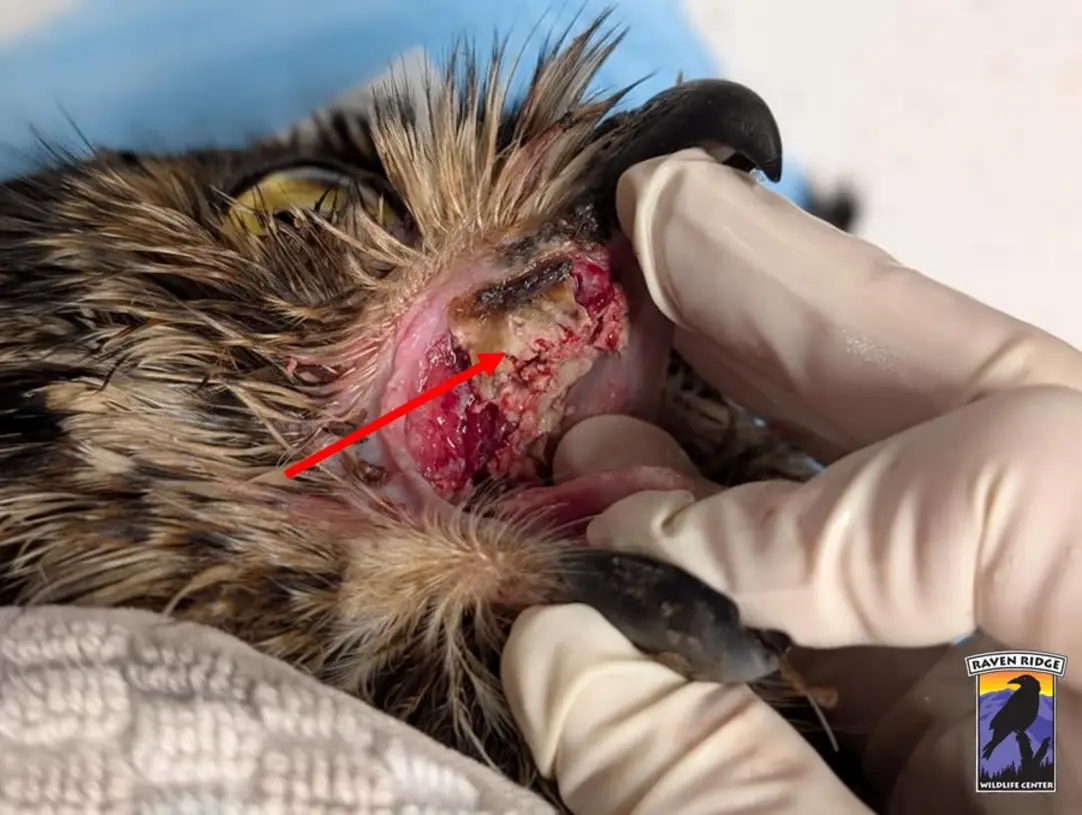
Cornell has a nice write up of the disease, its history, and more details of how it’s spread and prevention methods. Check that out here.
Excerpt:
Trichomonosis has been linked to population declines of European turtle doves and the extinction of the North American passenger pigeon. In the summer of 2005, outbreaks of trichomonosis in greenfinches and chaffinches in Great Britain occurred, resulting in mass mortalities and population declines. Outbreaks in finches have spread across Europe.
How long will the treatment take?
From some quick reading, an antibiotic like metronidazole is given in water for 5-7 days to kill off the protozoa, and then the lesions need time to heal, so that will vary with the extent of the damage. It sounds like it can get pretty bad and cause tissue damage to the liver as well. Recovery sounds possible if caught early enough.
Interestingly, Trichomonas gallina is what affects birds, but the closet related Trichomonas vaginalis is responsible for the most common non-viral STI in the world for humans, and is treated with many of the same medications.
I didn’t get too deep into it, but it seems older cures for birds were becoming less effective, so experiments were done with new human meds, as I saw some articles saying the meds aren’t labeled for use in birds in some countries.
There was also this article from The Suffolk Owl Sanctuary discussing the disease and it also cited a paper saying this is far from a modern disease, and notes a T-Rex skeleton showing signs of dying from the same disease!
this is far from a modern disease, and notes a T-Rex skeleton showing signs of dying from the same disease!
Wow, that is wild!
I was watching a PBS Eons the other day talking about how they found dino fossils with malignant cancer as well.
No matter how big, strong, technically advanced or whatever we multicellular organisms become, it seems those unicellular types can still show us who’s been around the longest!
Poor bird! I hope you can help him!
Not an owl, but the other day I was walking the dog, and I saw one of the neighbors who walks regularly watching something. I asked if everything was okay, and she said there was a bird upside down in the road. She had flipped him upright, but he hadn’t moved (he was alive, but not walking or flying away).
I looked closer (I knew my dog wouldn’t hurt him, he loves everyone and everything) and he was shaking. So I continued on our walk, and checked on the bird on the way back. He had made it to the side of the road, at least, so he was safe from cars.
He wasn’t there later that day, and we got 8" of snow the next day, so hopefully the little birdie is okay.
I really need to get our birdhouses back out. One was on a pole that was being pushed over by growing trees, and the other was run over by someone taking a shortcut through our yard. The latter one needs to be replaced, but the former just needs to be reinstalled in the ground somewhere.
I don’t work there, I just bring you guys owl news from around the world. Don’t want to steal any credit.
Be really careful with wild birds right now. I try to keep it positive here, so I haven’t really discussed the bird flu, but it is super serious and is starting to spread to cats and people and it is very contagious and deadly!
It sounds like it’s affecting larger birds like raptors, waterfowl, and poultry more than songbirds according to this article from Cornell, and this article from the AMVA goes into symptoms and cross species infection.
Please take care when interacting with wildlife, and keep your pets away for their safety. Not intending to be a downer or alarmist, just want to see everyone and their animal friends be safe and aware!
Good advice, thanks. I think the woman used gloves to touch it, while the dog and I didn’t touch the bird at all.
Man that picture of rehabber / owl is fucking incredible lol. Ripe for meme potential. Glad the owl is getting some medical attention! Hopefully they will be on their
feetwings again soonThe gaping break does make it look conversational.
I hope they fit this one in time. It was posted on 30 DEC, but I haven’t seen any status updates yet.
Aw poor li’l feller! Let’s call him “Tricky Dick” and hope he recovers soon.
I hope so too, I want to see him so happy and cleaned up.
